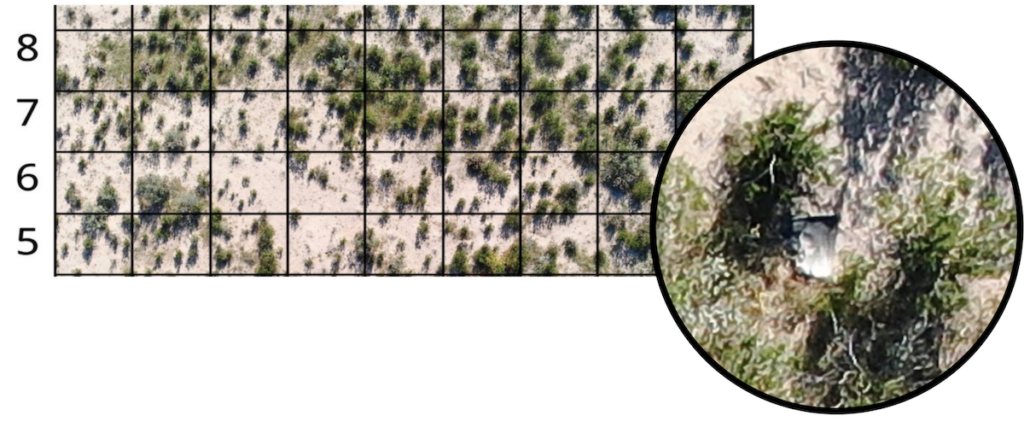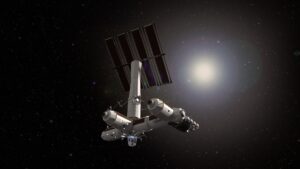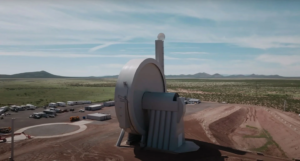
Blue Origin Just Revealed Exactly What Went Wrong On New Shepards Last Flight
Late last year an uncrewed New Shepard lifted off apart of the NS-23 mission carrying over 30 payloads. Just past 1 minute into the mission and a booster anomaly caused the capsule to abort via the escape system. Soon after, the booster fell back towards Launch Site one while the capsule deployed its parachutes and eventually touched back down on the ground.
This was the first failed New Shepard mission since its maiden flight and completely halted Blue Origin’s program. With New Shepard commonly carrying humans, the company began an investigation to figure out exactly what went wrong. Just yesterday, Blue Origin released a full NS-23 findings report going over exactly what happened.
It turns out that the direct cause of the NS-23 mishap was a thermo-structural failure of the engine nozzle. Despite the findings, it looks like the next crewed New Shepard mission could be right around the corner based on new information. Here I will go more in-depth into exactly what caused the failure, what this means for the New Shepard program, future human launches, and more.
Failed Engine Nozzle

After over half a year Blue Origin has officially determined the cause of the NS-23 mission failure. In the report, they first highlight that the NS-23 mishap resulted in the loss of New Shepard Propulsion Module Tail 3. The Crew Capsule escape system worked as designed, bringing the capsule and its payloads to a safe landing at Launch Site One with no damage. As part of the response to the Crew Capsule escape, the Propulsion Module commanded shutdown of the BE-3PM engine and followed an unpowered trajectory to impact within the defined flight safety analysis prediction, resulting in no danger to human life or property. In other words, after the anomaly occurred everything shut down on the booster and it proceeded to fall toward the ground before impact. They also made it clear that public safety was unaffected by the mishap, and no changes to crew safety system designs were recommended as a result of the investigation. Included in the report were a few images of the site where debris from the booster can be seen.
Not long after the incident, in accordance with the New Shepard Mishap Investigation Plan, Blue Origin formed a Mishap Investigation Team (MIT), led by members of Blue Origin’s Safety & Mission Assurance organization. The investigation was conducted with FAA oversight and included representatives of the National Transportation Safety Board and NASA’s Flight Opportunities Program and Commercial Crew Office. The MIT stood up debris search and recovery efforts at Launch Site One immediately following the mishap and recovered all critical flight hardware within days. In addition, Blue Origin also convened a Mishap Review Board (MRB), which included external non-advocate advisors. The MRB reviewed causal determinations made by the MIT and will continue to exercise oversight of the corrective action implementation.
As far as what exactly went wrong, using onboard video and telemetry, flight hardware recovered from the field, and the work of Blue Origin’s materials labs and test facilities, the MIT determined the direct cause of the mishap to be a structural fatigue failure of the BE-3PM engine nozzle during powered flight. The structural fatigue was caused by operational temperatures that exceeded the expected and analyzed values of the nozzle material. In a direct quote, they say “Testing of the BE-3PM engine began immediately following the mishap and established that the flight configuration of the nozzle operated at hotter temperatures than previous design configurations. Forensic evaluation of the recovered nozzle fragments also showed clear evidence of thermal damage and hot streaks resulting from increased operating temperatures. The fatigue location on the flight nozzle is aligned with a persistent hot streak identified during the investigation. “
As far as the direct cause of these problems during the mission, the MIT determined that design changes made to the engine’s boundary layer cooling system accounted for an increase in nozzle heating and explained the hot streaks present. The BE-3PM engine is the sole engine powering New Shepard’s booster. It uses high performing liquid oxygen and liquid hydrogen as propellants. In terms of its design, the BE-3PM is designed for operational reusability with minimal maintenance between flights. At full throttle, BE-3PM generates 490 kN (110,000 lbf) thrust at sea level (over a million horsepower). While this mishap was not ideal, Blue Origin is already planning the next missions.
Human Missions

With the problem now determined, Blue Origin released a short statement regarding the plan going forward. Specifically, in the report, they say, “Blue Origin is implementing corrective actions, including design changes to the combustion chamber and operating parameters, which have reduced engine nozzle bulk and hot-streak temperatures. Additional design changes to the nozzle have improved structural performance under thermal and dynamic loads. Blue Origin expects to return to flight soon, with a re-flight of the NS-23 payloads.”
In terms of what we can actually expect, we know for sure that New Shepard won’t take off again until the investigation is fully closed out. Just over a week ago Ariane Cornell, vice president of commercial orbit, astronaut, and international sales a Blue Origin commented, “We are still closing out the investigation. We’re working very closely with the FAA. We’re going into very deep, deep detail on that.” She also said that the company was planning to return New Shepard to flight “by the end of this year,” but was not more specific. She noted that the escape system on the vehicle worked “perfectly” on NS-23, a point the company emphasized in its statement about the investigation. In addition, Cornell noted the company had not lost any customers for its crewed flights since the mishap. “Demand continues to be strong,” she said. “We continue to have customers signing up for New Shepard. Some of those even asked to fly an ‘escape’ mission because it seemed so exciting. We have politely declined.”
While the experience for humans on the escape system would most definitely not be fun, it would have kept them safe which is the most important factor. Other recent comments from Gary Lai, the chief architect for New Shepard, also give us a better idea of New Shepard’s future. In one quote he said, “We expect that in the near future, the coming year, suborbital tourism will dominate our flights,” predicting that Blue Origin will support “about a couple” dedicated payload missions a year, the same as it has, even as the number of private astronaut flights grows.
The recent investigation conclusion has also brought up concerns about the company’s other engines and whether or not a similar error could have gone unnoticed. In addition to the BE-3PM engine that failed on the last flight, the company has been testing the newest member of the BE-3 family, BE-3U (Upper stage), optimized to operate in the vacuum of space. With a back-to-back turbine assembly and a larger nozzle, BE-3U generates 710 kN (160,000 lbf) thrust in vacuum. In the future, two BE-3U engines will power New Glenn’s restartable upper stage, meant to enable the full range of customer missions including direct injection to geostationary orbit.
There also is the BE-4 engine closing in on its first ever mission on United Launch Alliance’s Vulcan Centaur. Thankfully, these engines have been rigorously tested and a design change to the cooling system of a different engine should not affect its upcoming milestone.
What’s really important is Blue Origin’s transparency with this issue. Only days after the mission failed, the bipartisan leadership of the House Subcommittee on Space and Aeronautics sent a letter to the Federal Aviation Administration, calling for a thorough investigation. The chair of the subcommittee said in a quote, “I’m heavily in favor of transparency, and I’m hoping that the FAA comes through pretty quickly with this. I would strongly encourage Blue Origin to be as transparent as possible, because that builds trust. It doesn’t have to be overnight, but it would be nice to keep people updated on the progress they’re making.” This findings report and the provided information that we just received is a good sign from the company.
Focusing back on future flights, the information is still limited. Not long ago Eric Berger reported that “Based on an application filed with the Federal Communications Commission in January, it appeared that Blue Origin might be targeting a time period from April 1 to June 1 of this year for its next New Shepard flight. However, a spokesperson for the company said not too much should be read into this date, as it is not tied to a specific launch. “As a matter of course, we submit rolling FCC license requests to ensure we have continuous coverage for launches,” the spokesperson said.” This means that our best current estimate will be later this year. Between then and now Blue Origin will need to close out the investigation and prepare for another flight.
Conclusion
Blue Origin released a findings report yesterday with information on the booster, its engine, and exactly what caused the error. This type of transparency is very important for the company and everyone keeping up with their work. Overall the issue seemed to be related to a change made with the cooling system of the BE-3PM engine that can be fixed with relative ease. We will have to wait and see how it progresses and the impact it has on the space industry.



